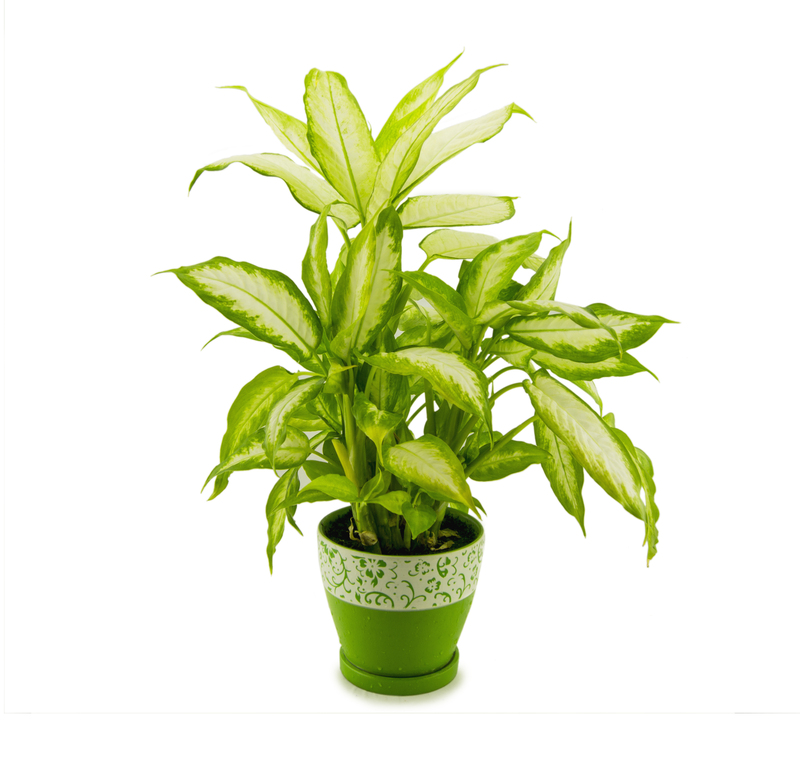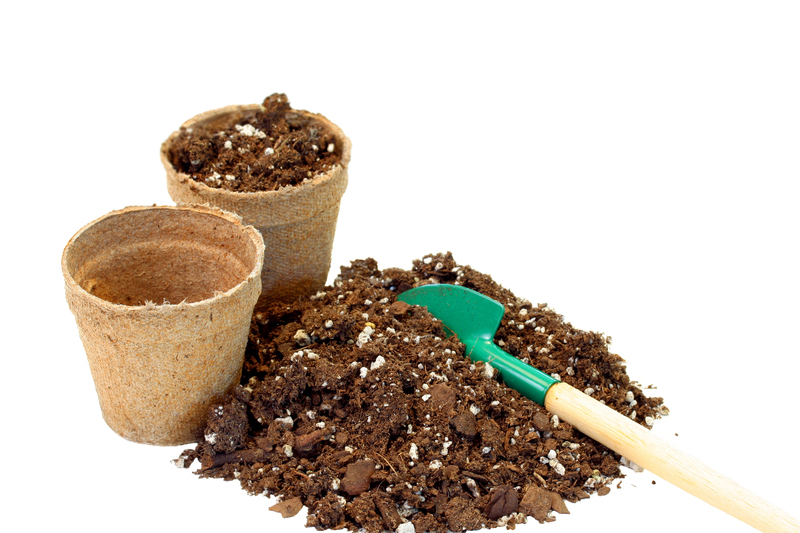Orchid Gardening: Tips for Lush Blooms
Posted on 20/05/2025
Orchid Gardening: Tips for Lush Blooms
Orchid gardening is an enchanting and rewarding hobby, merging the beauty of exotic flowers with the satisfaction of nurturing living art. Orchids, known for their vibrant colors and intricate shapes, captivate both novice and experienced gardeners. However, achieving lush orchid blooms can be a challenge without the right know-how. In this comprehensive guide, we unveil expert tips, tricks, and advice to help your orchids flourish like never before. Whether you grow phalaenopsis, dendrobiums, cattleyas, or other varieties, these recommendations are designed to optimize your orchid care routine and reward you with breathtaking blooms year-round.
Understanding Orchids: Keys to Successful Orchid Gardening
Before diving into specific orchid care tips, it is essential to understand what makes orchids unique plants. Over 25,000 orchid species exist, each with distinct requirements. Nonetheless, several commonalities unite them and influence their care:
- Epiphytic Nature: Most orchids, like phalaenopsis and dendrobiums, are epiphytes--growing attached to trees but not parasitic.
- Specialized Roots: Orchid roots are adapted for air, moisture, and rapid drying. This distinguishes them from typical houseplants.
- Diverse Habitats: Orchids grow in rainforests, mountains, and grasslands; understanding your variety's origin informs ideal conditions.
Popular Orchid Varieties for Home Gardeners
- Phalaenopsis (Moth Orchid) - Most common, suitable for beginners, blooms for months.
- Dendrobium - Tall stems, dramatic displays, needs seasonally adjusted care.
- Cattleya - Fragrant with large flowers, likes bright light.
- Oncidium - 'Dancing Lady' orchids, prefers slightly cooler temperatures.
Tip: Start with an orchid species that matches the environment in your home for the best chance of success.

Cultivating Perfect Conditions for Orchid Blooms
Orchids require specific environmental factors to thrive. The closer you replicate their natural habitat, the more rewarding your orchid gardening experience will be, resulting in fuller and more frequent blooms.
1. Light: Providing the Right Amount and Intensity
- Filtered Light is Best: Most orchids enjoy bright, indirect sunlight.
- Window Choice: An east-facing windowsill is ideal. Avoid harsh midday sun from south- or west-facing windows without sheer curtains.
- Artificial Lighting: Grow lights work exceptionally for indoor orchid gardening, especially during short winter days.
- Leaf Color Clues: Healthy leaves should be light-medium green. Dark green indicates too little light; yellow or red streaks, too much.
2. Orchid Watering Techniques: Less is More
- Soak and Dry: Allow potting medium to dry slightly between waterings. Overwatering is the #1 cause of root rot.
- Water Quality: Use rainwater, filtered, or distilled water. Tap water high in salts and chlorine may damage roots.
- Humidity: Orchids thrive in 40-60% humidity. Group plants, use trays with pebbles and water, or humidifiers to maintain ideal levels.
- Morning Watering: Water in the morning to permit foliage to dry by night, reducing disease risk.
3. Temperature and Airflow: Mimic Nature's Balance
Orchids usually need a day/night temperature differential to initiate blooming. Cattleyas and phals, for example, bloom better after cool nights.
- Daytime: 21-27?C (70-80?F).
- Nighttime: 13-18?C (55-65?F).
- Tip: Light, gentle airflow (a ceiling fan or open window) prevents fungal infections and strengthens plants.
Potting Media and Containers: Give Orchids Room to Breathe
Orchids don't thrive in ordinary soil. The correct orchid potting mix supports root health and encourages stunning blooms.
Best Potting Mixes for Orchid Gardening
- Bark Chips: Classic and long-lasting, offers excellent drainage and airflow.
- Sphagnum Moss: Holds moisture well, perfect for young plants or arid homes.
- Coconut Husk/Perlite: Enhances drainage and structure.
- Orchid Mixes: Pre-mixed bags from garden centers are convenient for beginners.
Choosing and Repotting Orchid Containers
- Transparent Plastic Pots: Allow you to monitor root health and moisture.
- Clay or Ceramic Pots: Provide stability, but ensure extra aeration holes are present.
- Repotting Frequency: Every 1-2 years or when potting medium breaks down.
Repotting Steps:
- Gently remove orchid, rinse roots to eliminate old mix.
- Trim dead or shriveled roots with sterile scissors.
- Place in new pot, fill around roots with fresh, moist medium.
Nourishing Orchids: Fertilizer for Maximum Blooms
Feeding orchids is both an art and a science; strong, regular feeding produces lush, abundant blooms.
How and When to Fertilize Orchids
- "Weakly, Weekly" Rule: Use a balanced, water-soluble fertilizer (20-20-20) diluted to 1/4th the recommended strength every week or fortnight.
- Flush Monthly: Rinse out the potting media with plain water once a month to prevent salt buildup.
- Bloom Boosters: Use a phosphorus-rich fertilizer (higher middle number, like 10-30-20) when forming or during the spike and bloom phase.
- Tip: Fertilize only when roots are moist to avoid burning them.
Forcing and Maintaining Orchid Blooms
Certain orchid gardening techniques can trigger and prolong those mesmerizing flowers.
Encouraging Orchid Flowering
- Provide a cool snap: As many orchids initiate blooming after cooler nighttime temperatures in autumn, move your orchid to a cooler room (13-15?C/55-60?F at night) for a few weeks.
- Maintain consistent care: Sudden changes in light, moisture, or feeding may stress the plant and inhibit blooms.
- Don't cut healthy spikes: For phalaenopsis, leaving the old flower spike until it turns brown may encourage a secondary bloom.
Extending Orchid Flower Longevity
- Keep away from drafts and heaters: Sudden temperature shifts shorten flower life.
- Avoid overhead watering: Water only the roots--moisture on the flowers or crown can shorten their beauty and invite rot.
- Monitor for pests: Regularly inspect for aphids, scale, and mealybugs which can damage blossoms.
Common Problems and Solutions in Orchid Gardening
Even the best orchid gardeners encounter challenges. Recognizing issues early and knowing the remedies keeps your collection healthy and blooming.
Root Rot and Overwatering
- Symptoms: Mushy, dark brown roots, wilting leaves.
- Solution: Remove decayed roots, repot with fresh, coarse medium, water only when needed.
Leaf Yellowing
- Possible Causes: Overwatering, insufficient light, or natural aging.
- Solution: Adjust care accordingly. Lower, older leaves will occasionally yellow as normal.
Pest Infestations
- Types: Aphids, spider mites, mealybugs, and scale are most common in orchid gardening.
- Solution: Wipe leaves with soapy water, apply horticultural oil, and isolate affected plants.
Failure to Bloom
- Common Reasons: Insufficient light, no temperature fluctuation, or lack of nutrients.
- Solution: Move to brighter location, provide cool nights, fertilize as described above.
Advanced Orchid Gardening Tips for Enthusiasts
If you want to elevate your orchid garden further, consider these advanced tips:
- Experiment with Mounting: Attach orchids to bark, cork, or tree branches for a naturalistic display--ideal for experienced growers with optimal humidity.
- Hydroponic Orchid Culture: Try semi-hydroponics using LECA (expanded clay pellets), which offers stable moisture and air to roots.
- Crossbreeding and Propagation: Use keiki paste or division to multiply your collection.
- Recordkeeping: Keep a journal of bloom times, fertilizer regimens, and any notable successes or problems--a great learning tool.
Orchid Gardening Year-Round: A Seasonal Care Calendar
Understanding the rhythm of the seasons can help synchronize your orchid care routine for optimal growth and abundant blooms.
Spring
- Begin fertilizing as growth starts, increase watering as days lengthen.
- Repot if needed, prune away any dead flower spikes.
Summer
- Monitor humidity and temperature, shade from intense midday sun.
- Watch for pests and increase air circulation.
Autumn
- Encourage blooming by giving cooler night temps.
- Reduce watering gradually; keep feeding unless plant goes dormant.
Winter
- Maintain light levels with grow lights if needed.
- Monitor for molds in drier air, reduce feeding frequency.

Frequently Asked Questions About Orchid Gardening
1. How should I prune an orchid after flowering?
For phalaenopsis orchids, wait until the spike turns brown before cutting it back to encourage possible rebloom. For others, removing the spent flower spike helps the plant conserve energy.
2. Why are my orchid leaves wrinkled?
This usually indicates underwatering or root problems. Inspect roots for rot and adjust your watering schedule.
3. Can I grow orchids outdoors?
Many orchid varieties can be summered outdoors in climates without extreme temperatures. Ensure indirect light, humidity, and protection from wind/hail.
Conclusion: Achieving Lush Blooms in Orchid Gardening
Orchid gardening is equal parts patience, knowledge, and attentive care. By providing proper light, moisture, nutrition, and understanding your orchid's habits, lush, vibrant blooms can be yours every season. Dive in, experiment with different varieties, and enjoy the rewards of a stunning, flower-filled home!
Ready to transform your home with dazzling orchids? Use these easy-to-follow orchid gardening tips to unlock your plants' full potential for years of beautiful, lush blooms!



